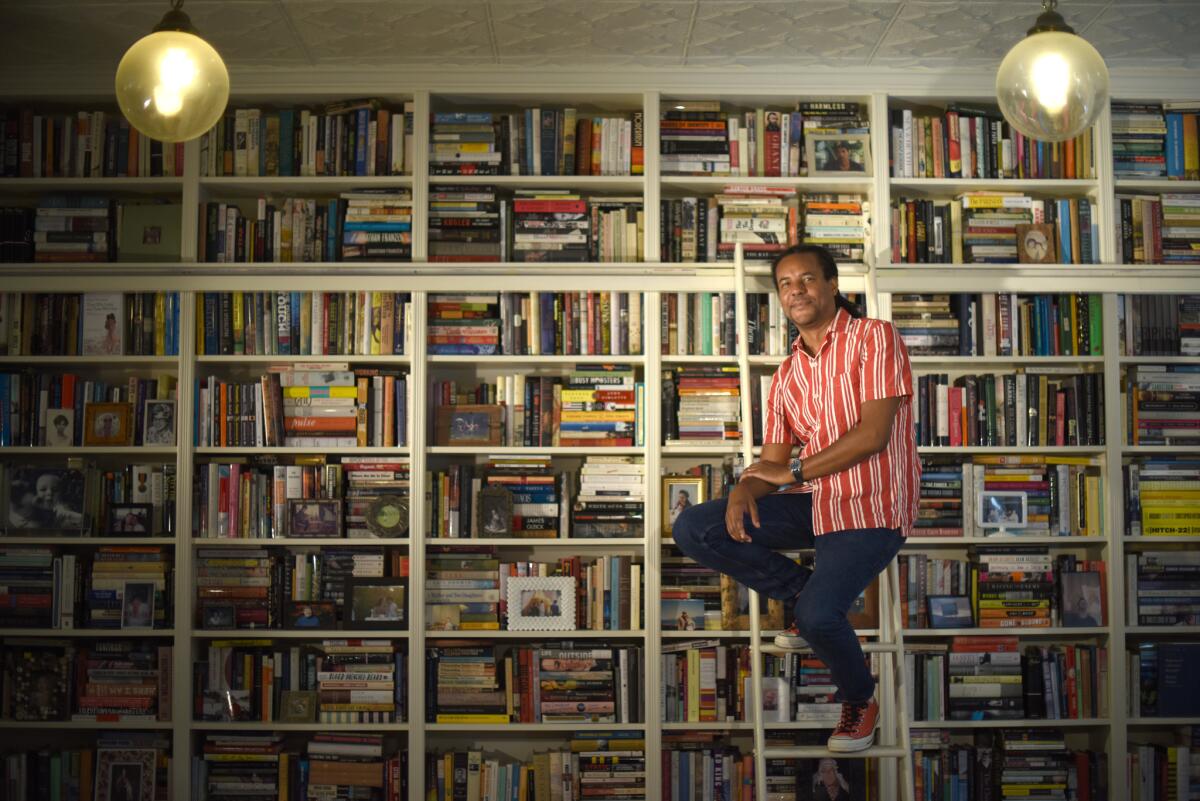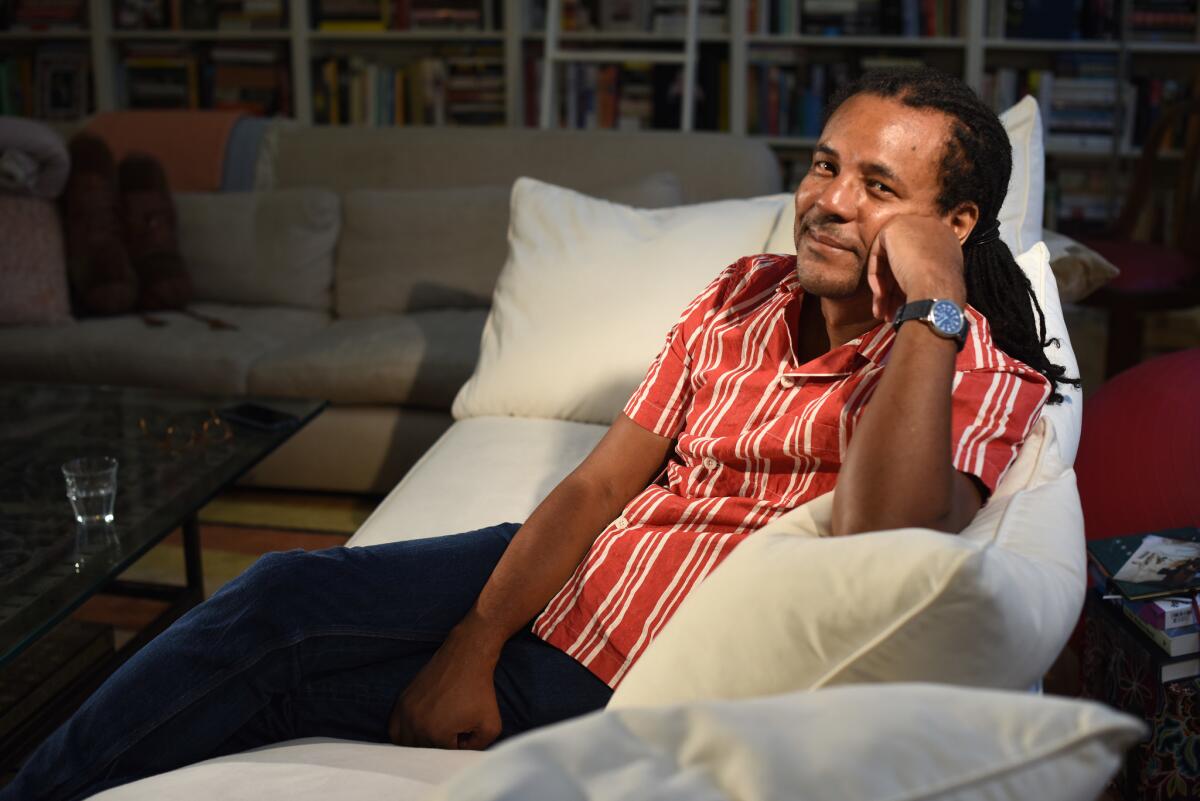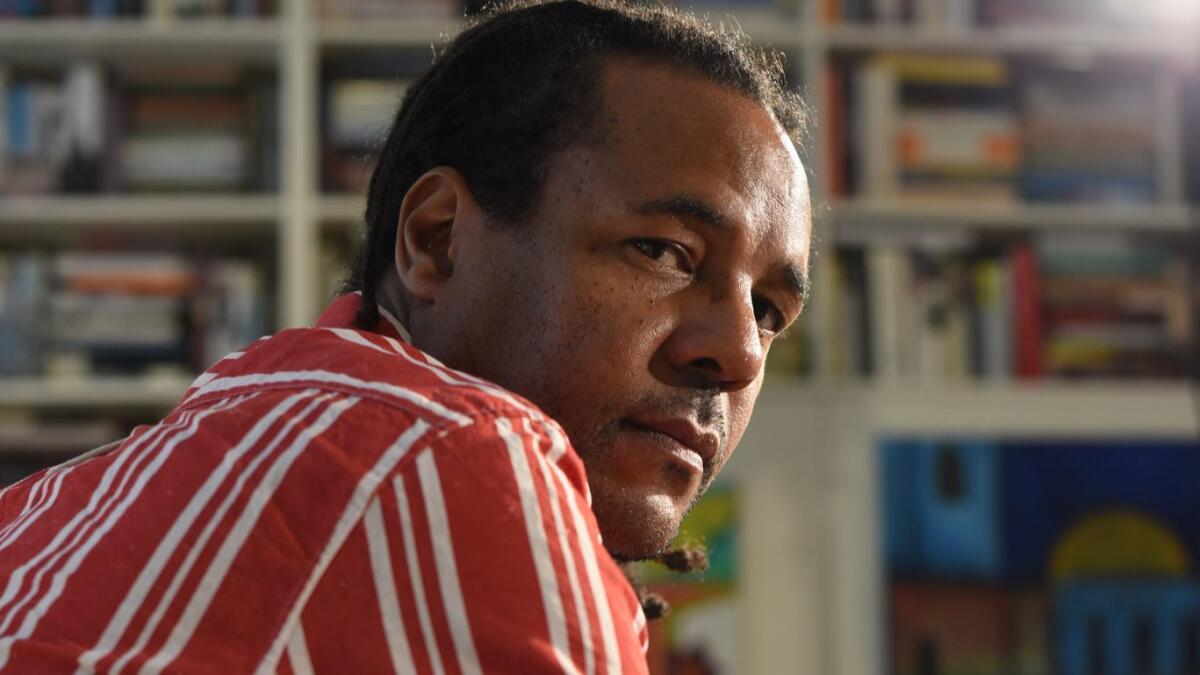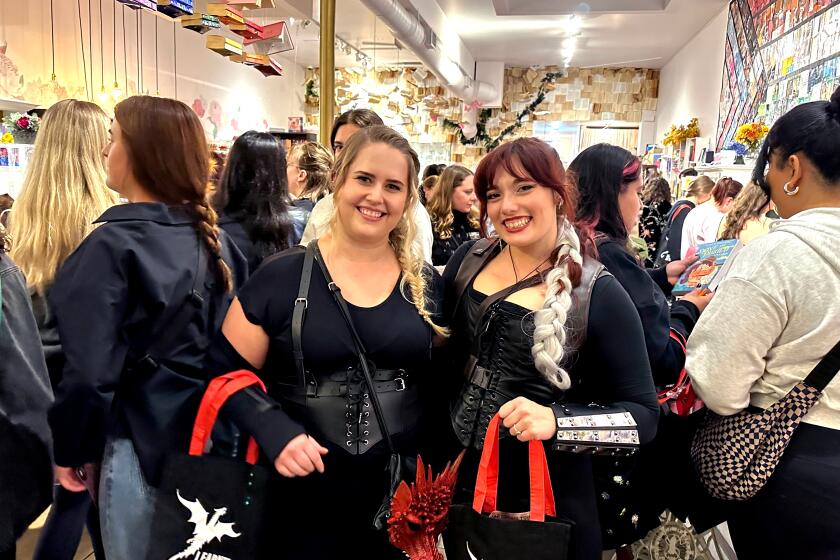Colson Whitehead on the ‘incredible evil’ of the real school that inspired ‘Nickel Boys’

- Share via
Two miles north of Interstate 10, a cool breeze ruffles the overgrown grass around the Dozier School for Boys. This is 2,200 miles east of Santa Monica, in Marianna, Fla., where the air is filled with humidity. Grasshoppers sing and a jay swoops by, bright blue. The scattered buildings are picturesquely losing paint, an Instagram idyll, were it not for the terrible abuses that happened there. The school, which finally closed in 2011, is the inspiration for Colson Whitehead’s new novel, “The Nickel Boys.”
Whitehead researched the school’s history, but that’s enough for him. “I’ll never go there,” he says. “It’s a place of incredible evil.”
For more than a century, Dozier was an outwardly progressive state reform school that behind closed doors wreaked horrors on its students. Mandated to provide “careful physical, intellectual and moral training” so the children would “be restored to the community with purposes and character fitting for a good citizen,” it instead dedicated a building to beatings and assaults. For years, it was rumored that some didn’t make it out alive.
In Whitehead’s fictional version, the Nickel School, teen boys Elwood and Turner become friends there in the early 1960s. They have different ideas about the world and that draws them together. Yet we’re not sure how these young, gifted and black boys will survive.
The kind of predatory behavior and abuse that Dozier described happens all the time. That was horrifying to sort of think about.
— Colson Whitehead
“The book is short and linear — at least by my usual standards,” Whitehead, a MacArthur Genius Fellow, says with a laugh. When I caught up with him by phone, he was holed up at a Maryland warehouse for three days, signing 15,000 books for advance orders.
That’s a big number, boosted by the prominence of his 2016 novel “The Underground Railroad.” A partly fantastical story of a young woman’s escape from slavery, the book won the National Book Award and the Pulitzer Prize and spent 49 weeks on the L.A. Times’ bestseller list. Oprah Winfrey selected it for her book club and Barry Jenkins (“Moonlight,” “If Beale Street Could Talk”) is slated to direct it as a series for Amazon.
Whitehead first planned a lighter follow-up, a mystery. But that changed as a new regime took over the White House. “After Trump got elected, I felt sort of paralyzed over our current political situation: ‘What can I do?’” he says. “It seemed that working on ‘The Nickel Boys,’ which was sort of a back-burner idea, might be more healthy, constructive, in terms of feeling that I was engaging with the world.”
“The Nickel Boys” follows Elwood’s and Turner’s experiences at the school and the way their worldviews intersect. As teenagers, they are partly formed by their pasts while still inventing themselves; each is altered by the other’s teasing, pushing and care.
Turner is street-smart and independent, having left a bad home; he’s inclined to mischief that is no big deal if he’s lucky — and will lead to prison if he’s not. Elwood was raised by his grandmother; he winds up at the school because of a police mistake. He is careful, educated and reveres Martin Luther King Jr.
“It’s not like the old days,” Elwood tells Turner. “We can stand up for ourselves.”
Turner replies, “That … barely works out there — what do you think it’s going to do in here?”
There was joy, Whitehead says, in discovering these characters and making them real. He explored “the war between the two boys’ philosophies: optimism, hope, activism and then pessimism, realism, cynicism — trying to find that integrated path that makes a whole person,” he says. “Elwood doesn’t have an answer; neither does Turner.”
A thread of dark humor runs through the story. While working without pay, Elwood notices “the brand of paint was Dixie, the color Dixie White.” Even when they are suffering, they can observe the ironies of their situation. “The boys were called students, rather than inmates, to distinguish them from the violent offenders that populated prisons. All the violent offenders, Elwood added, were on staff.”
I think most black Americans can identify with the notion of being swept up into a lethal, terrible situation very ... randomly because of our skin color.
— Colson Whitehead

An ‘emotional summer’
The real Dozier school came to national — and Whitehead’s — attention in 2014, when efforts to identify an existing graveyard led to the discovery of a swath of unmarked student graves. (The discoveries are ongoing; recently, the state ordered a study of still more possible burials on the 1,200-acre campus.) Officials searched for relatives’ DNA to identify remains; former students shared tales of physical and sexual abuse and rumored killings.
That was, Whitehead says, “a very emotional summer” because of the violence against black men that dominated the news. “Michael Brown getting shot in Ferguson and then the days of riots and police action and tanks running down the streets. Eric Garner in Staten Island was strangled by policemen,” he says. “By the time I heard about Dozier I was feeling angry, I was feeling powerless before the machinery of institutional racism that’s so entrenched, has always been here and always will be here, and the way it manifests itself.”
I was feeling powerless before the machinery of institutional racism, that’s so entrenched, [that] has always been here and always will be here.
— Colson Whitehead

As a young black man killed by a white police officer, Brown became part of a shameful litany. For Whitehead, growing up in New York City in the 1980s, that litany included Michael Stewart, a graffiti artist who died after being arrested by police in 1983.
“I think that in another circumstance, I could have ended up like Michael Brown,” Whitehead says. “I’ve been stopped by police, handcuffed, you know, because some white lady was mugged around the corner.”
“I was in a store — and I was the first young black male the police came across and so they took me out to the squad car. I matched the description. And in those situations, you reach for your wallet, you move too fast, and they’re like, ‘Oh, he’s going for a gun.’ [Even though] It was a cellphone,” Whitehead says.
He connects real-life events with his novel. “I identify with the randomness of how Elwood gets in there. I identify with the randomness of how Michael Brown encountered the wrong cop that day. I think most black Americans can identify with the notion of being swept up into a lethal, terrible situation very quickly and randomly because of our skin color.”
In the face of that, however, there is hope. We know from the beginning of “The Nickel Boys” that at least one of the characters will make it to adulthood, and New York City. Those who went to the school are not undamaged — “They had been denied even the simple pleasure of being ordinary,” Whitehead writes — but with luck, their futures hold happiness.
The lost ones
Although “The Nickel Boys” is set in the sunset days of Jim Crow, its setting has echoes in the past and present.
“The thing about places like Dozier — it’s a reform school, it’s a home for unwed mothers in Ireland, it’s a residential school for indigenous children in Canada where they would take kids from their families and would try to teach them how to be citizens of a proper white country — all these places where adults prey upon children, they’re all over,” Whitehead says. “And now you hear about the detainment camps of refugees coming from Central America and Mexico and the conditions that they’re keeping the children in, and they’re being looked after by for-profit companies by people who have no experience dealing with children. The kind of predatory behavior and abuse that Dozier described happens all the time. That was horrifying to sort of think about, or appreciate in a new way.”
The town of Marianna, Fla., was devastated by Hurricane Michael last October: trees snapped in two, roofs ripped from houses, the fronts of historic brick buildings downtown shorn off. But the Dozier school was left largely intact. It’s as if the site of so much cruelty were waiting for something. But what?
Its symmetrical buildings remain behind a high fence with trespassing warnings, a sheriff’s car parked as sentry. The state and county have plans to turn the property into a commercial shipping center. As cynical Turner would see it, erasing history for commerce is to be expected. But optimistic Elwood could look at it differently, and imagine that the site is standing by until it can become a memorial for those lost there.
::
Colson Whitehead
Doubleday; 224 pp., $24.95
Kellogg is a former books editor of The Times. She lives in Alabama and can be found on Twitter @paperhaus.
More to Read
Sign up for our Book Club newsletter
Get the latest news, events and more from the Los Angeles Times Book Club, and help us get L.A. reading and talking.
You may occasionally receive promotional content from the Los Angeles Times.











